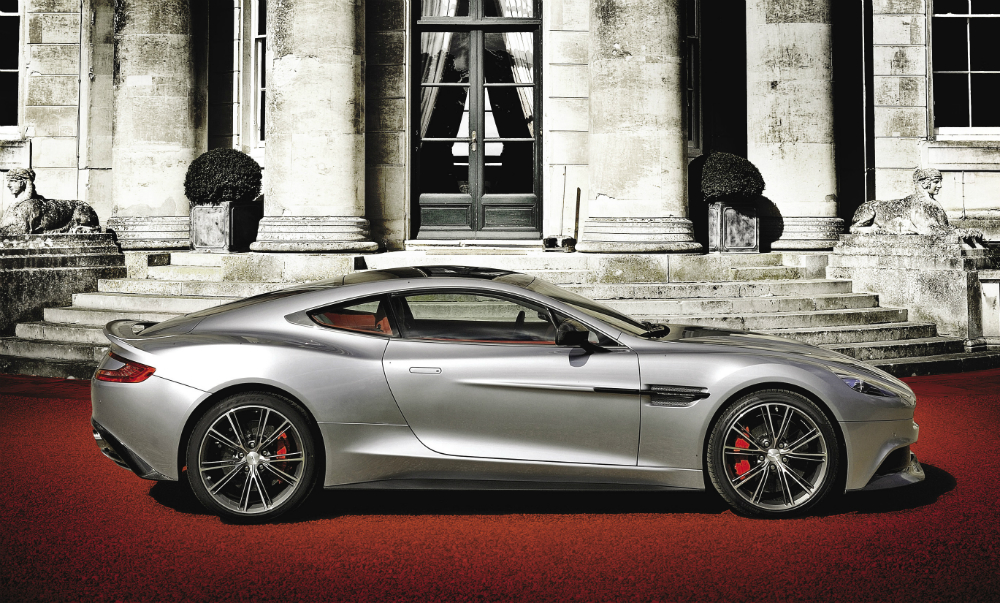
A new standard for GT cars
Well, this one will really fire a warning shot across the bow of many a carmaker. Without question, the 2013 Aston Martin Vanquish certainly raises the bar for the brand and places the flagship among the very best cars in the world.
This is not to say that the Aston Martin DBS, the car that replaces the Vanquish in the iconic British manufacturer’s line-up, was not a formidable piece of engineering. But, the Vanquish is a better car in every significant measure, from the ground up and from tip to tail.
Before we delve into the details, let’s take a moment to address what other reviewers will, no doubt, criticize about the car due to their inability to differentiate a world-class grand touring car from one that is slightly less than world-class. First paragraph, more or less: “The ‘all-new’ Vanquish is based on Aston Martin’s antiquated VH architecture, which first appeared on the DB9 in 2004. Eight years is a long time in the car business, so when will we see something new?”
Let’s put an end to this, shall we?

Based on personal experience, I’ve never heard of anyone in the market for a car of this calibre complain that the platform is too old—or too anything, for that matter. In fact, when discussing proper GT cars, I’ve never heard of anyone discuss the platform at all. Reason being, the truly discerning customer with the means to purchase such a car ultimately cares about one thing and one thing only—how it drives.
The all-new Vanquish drives extremely well, thank you very much.
For all its impressive attributes, the DBS was my least favourite car in the AM range. Although it was always a thrill to drive—510 horsepower will do that kind of thing for you—the car also had an almost violent quality to it. With the DBS, it always felt like there was too much engine for the rest of the package.
Just imagine, then, how much better the Vanquish must be: The 6.0-litre V12 engine (similar in design to that of the DBS but featuring new construction) produces 565 horsepower so the car feels significantly quicker, yet far more planted at the same time.
This is no mean feat—and it’s largely been accomplished by an entirely different design and manufacturing process, inspired by the limited-edition One-77 supercar. This process blends aluminum and carbon fibre into the car’s bonded structure; all the body panels are made of carbon fibre, which gives the Vanquish a very clean yet aggressive appearance.
The latest technology can be a wonderful thing: In the case of the Vanquish, the structure is about six kilograms lighter than that of the DBS, but the car itself is some 40 kg heavier overall, due to increased safety equipment and other content. The big plus, though, is the fact the Vanquish features a more than 25% increase in torsional rigidity over the car it replaces.
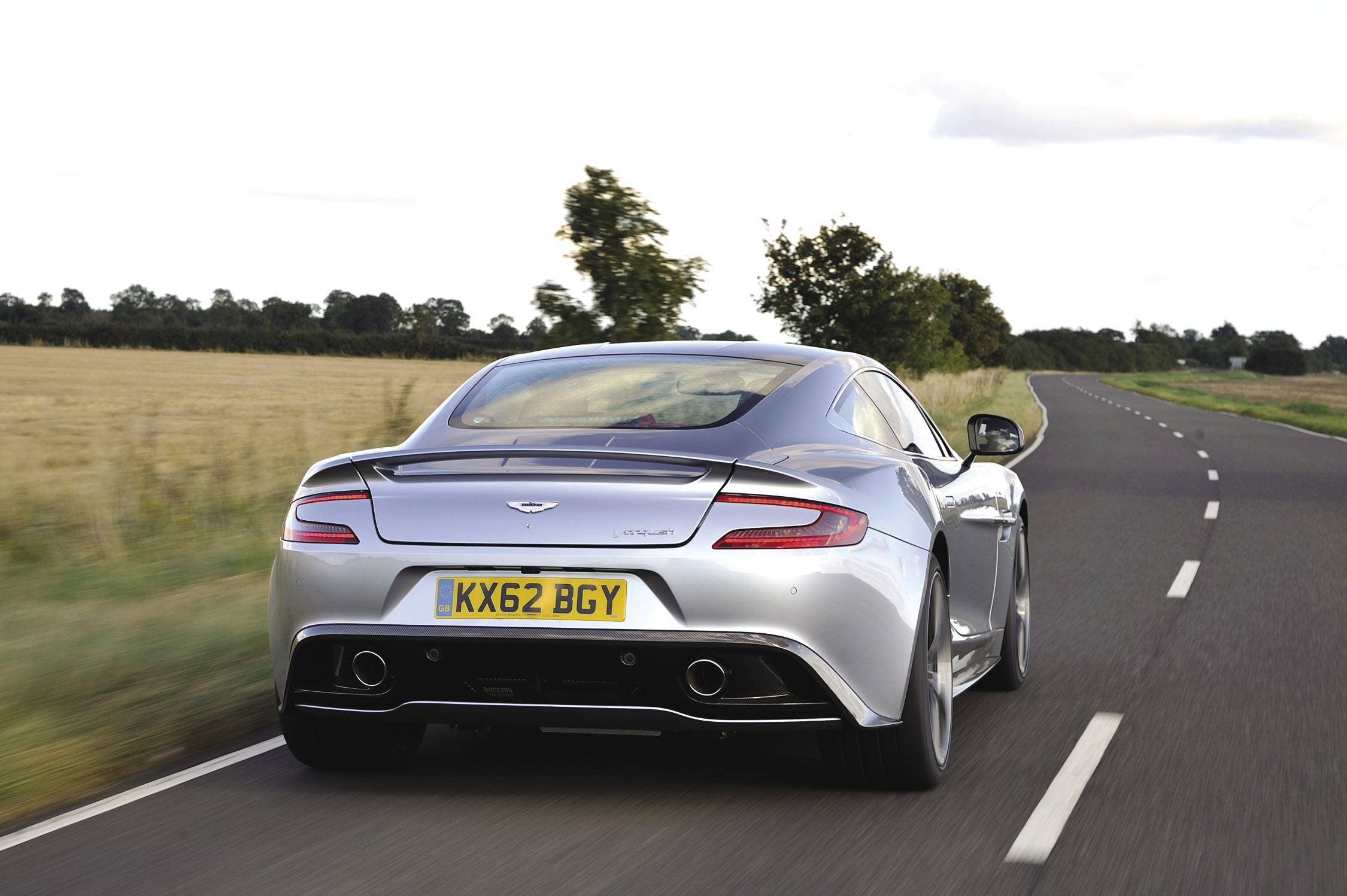
On the road, despite the added overall weight, the new car definitely feels more composed and it also somehow manages to feel lighter. The steering is, for sure, lighter, yet it’s more direct than the DBS and the wheel communicates very clearly what’s going on where the Pirelli P Zero rubber meets the road. The keys: A revised steering ratio has been incorporated and a more forceful structure has given the engineers increased freedom to perfect the suspension system tuning.
The effort has paid off because the suspension system is close to perfect and the balance is also fantastic, as per company tradition. Our drive route included the worst paved roads I’ve ever driven across. Sending the Vanquish along one particular piece of tarmac was akin to piloting a jet ski through white water—there were more waves than the Queen of England at a public appearance. But, the latest Aston handled the situation with remarkable composure and plenty of outright speed—in fact, the limiting factor along this particular road was the bravery of the driver and not the capabilities of the car itself.
Of course, there’s more to a proper modern GT car than just handling over rough roads—much more. Fortunately, the Vanquish answers the call with plenty of speed from that big V12: The sprint from zero-to-100 km/h takes an estimated 4.1 seconds, a few tenths quicker than the DBS ever managed. The engine, which generates 457 lb-ft of torque, pushes the Aston to a fairly serious top speed of 295 km/h.
The other key mechanical attributes of the car are a mix of the proven and the profound. The power is transmitted to the rear wheels via the latest version of Aston Martin’s six-speed automatic sequential manual transmission. While a shade slower than the fastest dual-clutch transmissions on the market, this swapper is hardly slow and it’s significantly lighter. There will be no manual transmission available for the Vanquish coupe and its inevitable soft-top variation; this is the legacy of only 3-4% of DBS owners worldwide opting for a manual transmission.
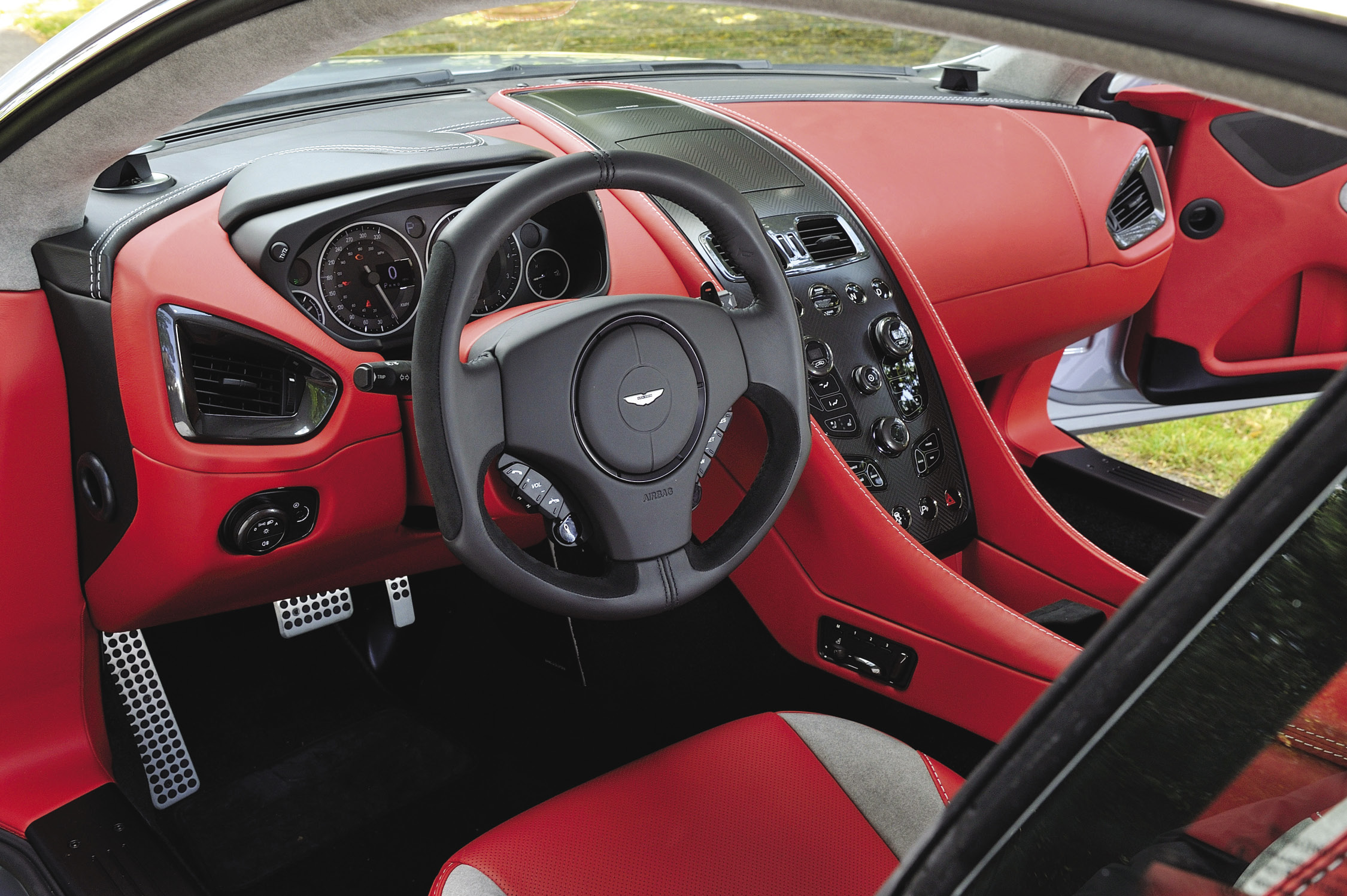 |
 |
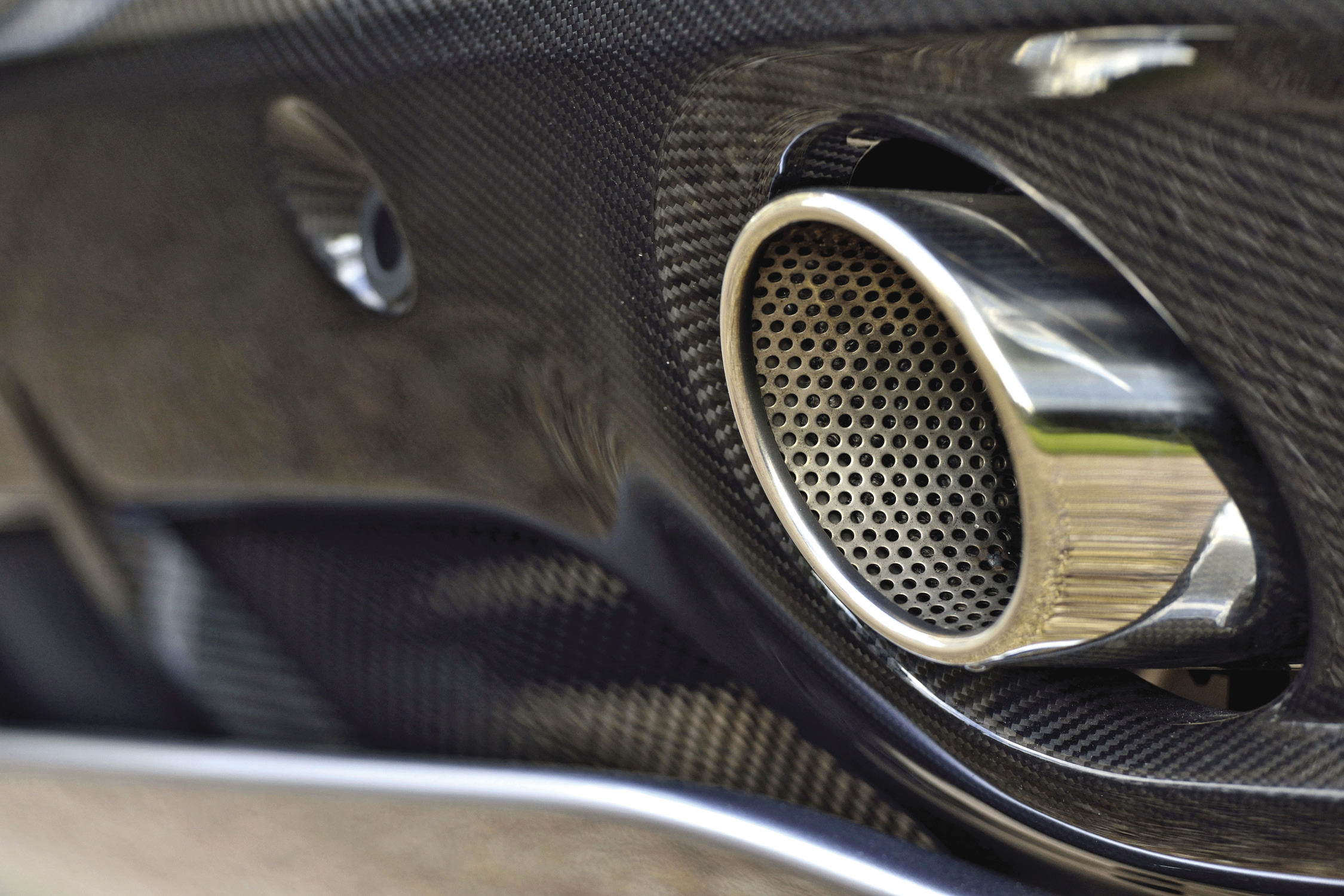 |
For the first time ever in an Aston Martin, a launch control system is part of the picture. As with other systems, operation is simple: Press a button on the centre console, place one foot on the brake, the other at 80% throttle, slide off the brake and let ‘er rip. The Vanquish also features a sport button that sharpens engine and transmission response, as well as a three-mode suspension system setting with normal, sport and track settings.
On the stopping front, the Aston employs Brembo carbon ceramic brakes, 398 mm discs with six-piston calipers in the front, 360 mm discs with four-piston calipers at the back. During the drive, there is no real opportunity to test the anchors to their fullest; my guess is they would do the business.
Apart from the wonderful underpinnings of this car, there are countless other ways in which the Vanquish is different from the DBS. There is the exterior styling of course; the new car picks up a number of design cues from the One-77, including the tapered waistline, side strakes and LED brake light cluster. The liberal use of carbon fibre has led to a truly striking feature in the single-piece, integrated rear wing called the Aero Duct.
Inside, the Vanquish adopts other features from the One-77, including the greatly revised centre console that incorporates haptic feedback buttons to operate all manner of interior features. The feel and sound of the buttons were still being worked on, but the idea behind this approach is solid. The console itself is a single piece of carbon fibre, which looks very cool, while the blob-like etchings surrounding the buttons are somewhat less successful. The side vents are also an odd shape and the optional, flat-sided One-77 steering wheel is something I would not opt for.
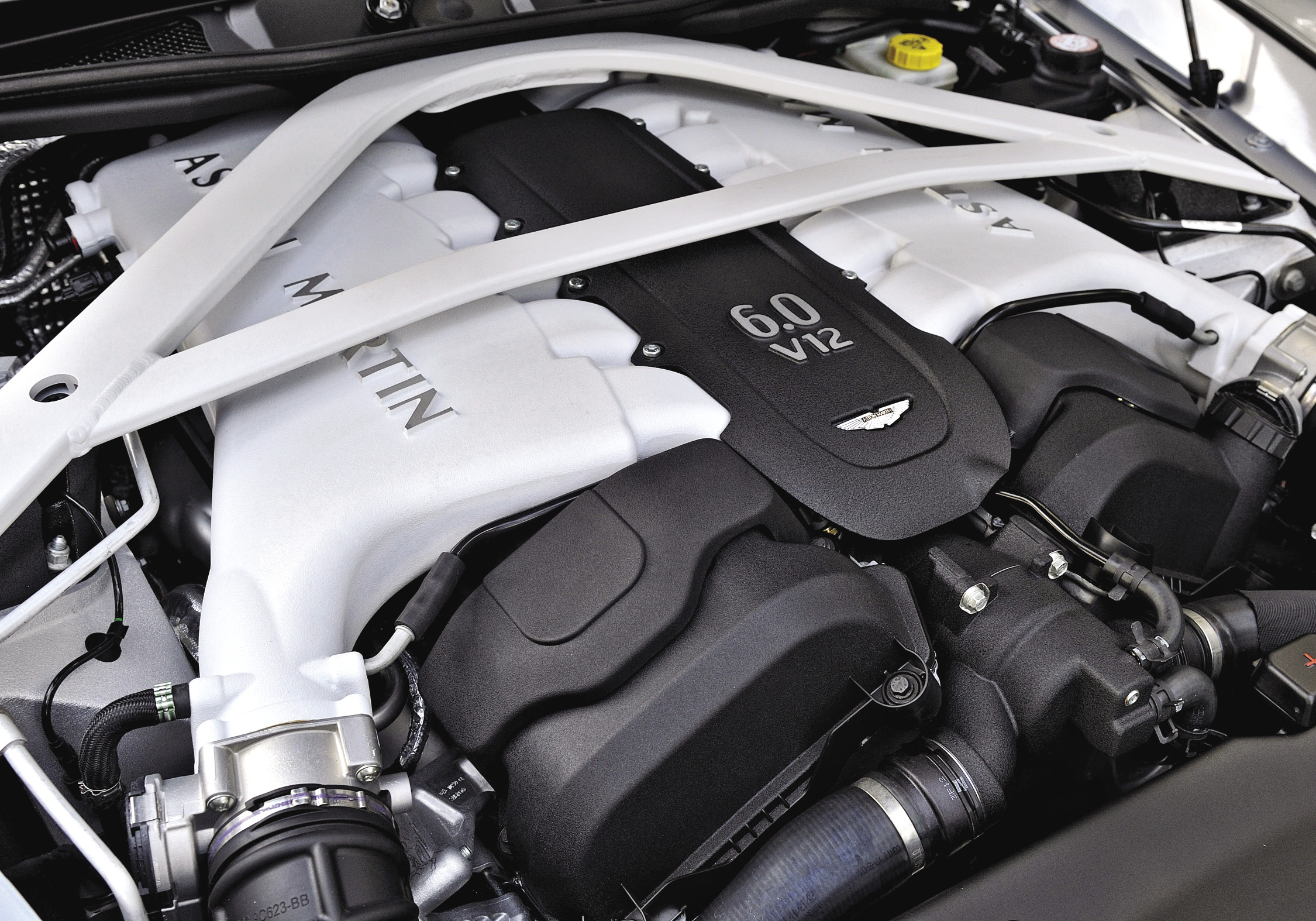 |
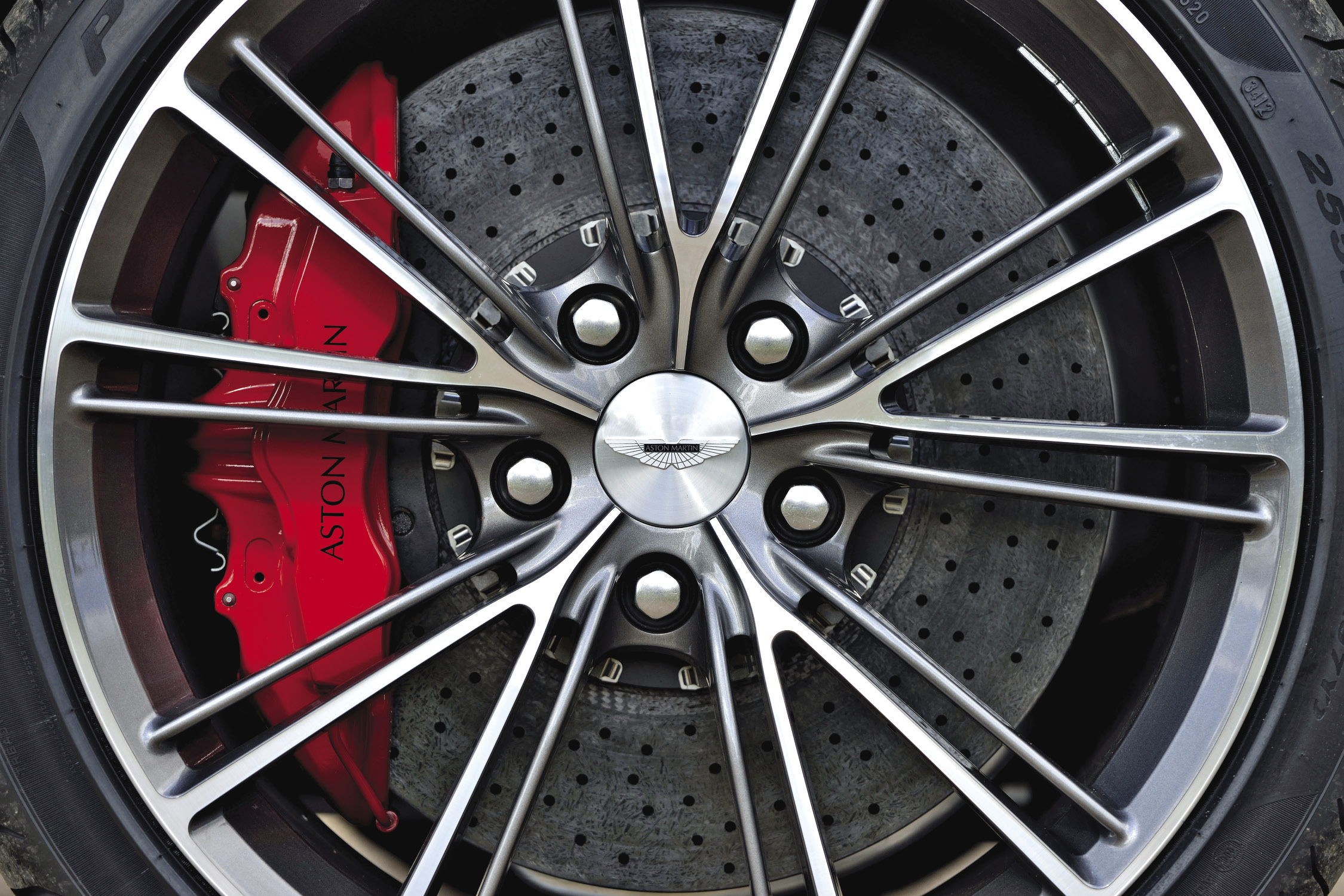 |
Back on the positive side of the ledger, the cabin of the Vanquish is significantly larger than that of the DBS and it feels that way. The new car offers more legroom, shoulder room and elbow room; the interior volume has grown by 140%; and the trunk is more than 60% larger than its predecessors’. The interior is swathed in leather, Alcantara and, of course, carbon fibre. The Vanquish is available in either two-seater or 2+2 configuration.
In the final analysis, the 2013 Aston Martin Vanquish is an incredible achievement, particularly for a niche manufacturer. It’s a significant improvement over the DBS in nearly all respects and it’s a fraction away from giving the likes of Ferrari and Porsche nightmares.
Specifications:
Base Price: $296,000
Engine: 6.0L V12
Horsepower / Torque: 565 hp / 457 lb ft
Configuration: FR
Transmission: 6-speed sequential automatic
Fuel Economy Ratings: 17.8 / 8.49 L/100 km; 13.2 / 27.7 mpg (city / hwy.)






















